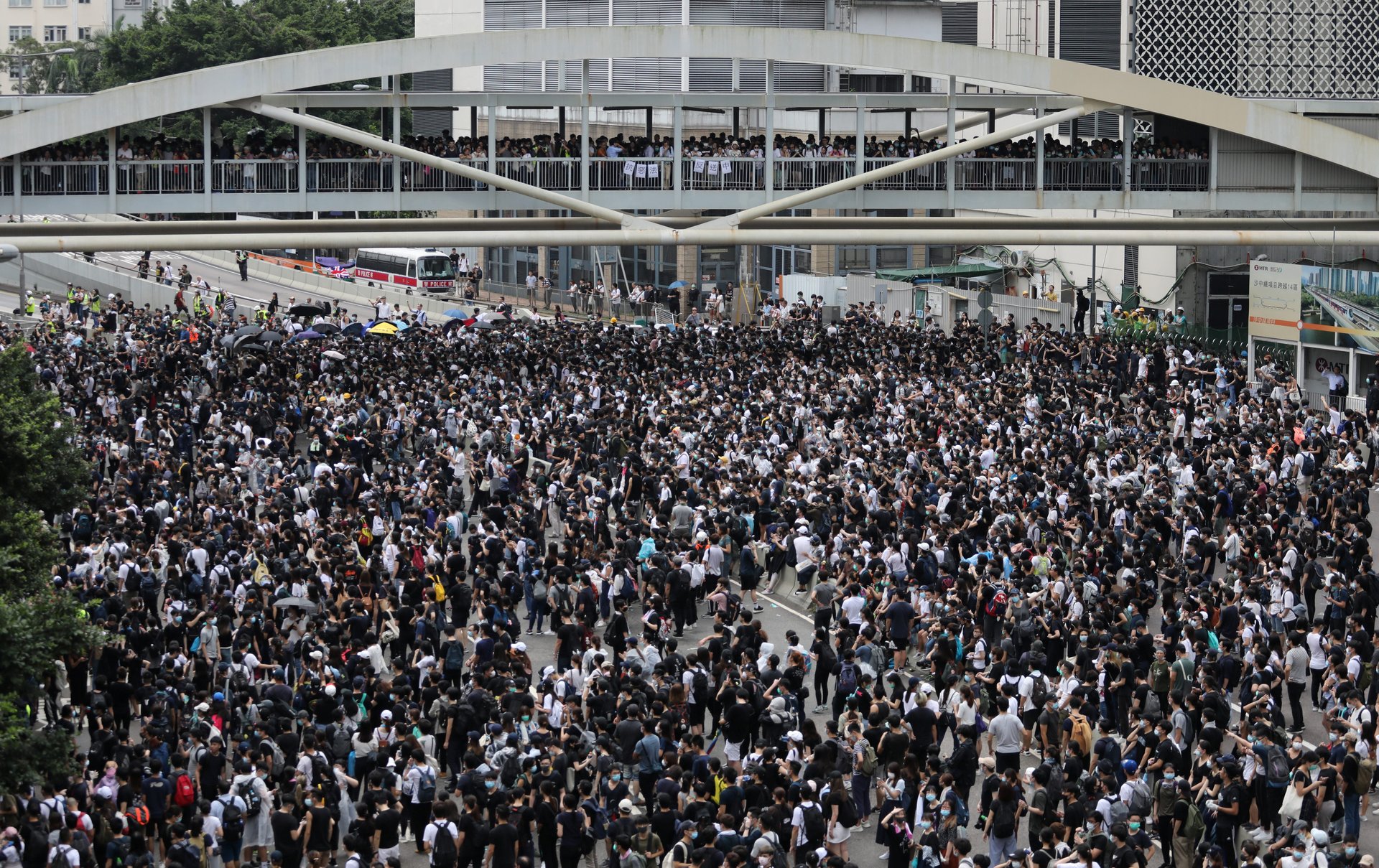Occupy 2.0 is beginning in Hong Kong
When protesters cleared out of downtown Hong Kong’s streets in 2014 after occupying them for two months, they vowed that they would be back. And they are.


When protesters cleared out of downtown Hong Kong’s streets in 2014 after occupying them for two months, they vowed that they would be back. And they are.
In the early hours of today (June 12), tens of thousands of people poured into the streets of the city’s Admiralty district, the location of major government buildings, part of a wave of protests against a controversial overhaul of an extradition law that would make it possible to send suspects to mainland China for trial. They quickly blocked some of the same major arteries of Hong Kong Island that were also occupied during the Umbrella Movement of 2014, the protests which were calling for more democratic elections of the city’s leader.
In scenes reminiscent of 2014’s protests, protesters donned surgical masks and carried umbrellas, with many carrying boxes of supplies including bottled water and masks for the crowds. The atmosphere was tense as those at the front line—marked by metal barricades—stood just meters away from rows of police in riot gear. Many at the front opened up colorful umbrellas as a precaution against tear gas, water cannons, and pepper spray. Police had deployed pepper spray on multiple occasions.
Standing near a line of riot police, Sunny Chan, 18, who just finished high school this year, was decked in a hard hat, goggles, a mask, and gloves.
“The government decided to ignore the popular will with pathetic excuses. I’ve decided to use this last opportunity to protect my freedoms,” he said.
Lawmakers were due to proceed with a second reading of the bill in the city’s legislature today, in defiance of a protest on Sunday (June 9) that drew over a million people to the streets calling for the law to be scrapped, according to organizer estimates. The legislature’s president announced, however, that the meeting would be postponed.
Chants of “Retract!” periodically broke out as protesters demand that the government shelve the bill. From the pedestrian bridge above the highway, protesters dropped opened umbrellas to the crowd below.
After Hong Kong’s chief executive Carrie Lam vowed on Monday to press on and enact the bill—dubbed the “evil law” by opponents—protest groups announced a new wave of actions, including surrounding the legislature building and calling on businesses to strike, with hundreds heeding the call and closing today or allowing their employees to strike. Some secondary schools and universities have also said they would join the strike today.
Christian groups, meanwhile, have also been taking part in a days-long “pray-a-thon” starting yesterday (June 11), as they sang hymns into the night outside of the Legislative Council.
Michelle Leung, 20, a college student, was standing by a barrier and helping protesters climb up a makeshift ladder fashioned out of a metal fence. She wasn’t able to attend Sunday’s march because of work—and was also too young to take part in the 2014 protests—and said she felt compelled to come out today. “I want to do my part for Hong Kong… I love the country but I don’t love the (Communist) party.”